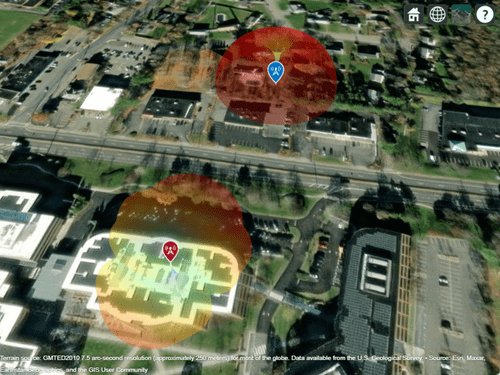pattern
Display antenna radiation pattern in Site Viewer
Description
pattern( displays the 3-D antenna
radiation pattern for the specified transmitter site in the current Site Viewer.
By default, the function calculates the pattern using the frequency stored in
tx)TransmitterFrequency property of the transmitter site.
The antenna gain (dBi) in a particular direction determines the color of the
pattern.
pattern(___,
displays the 3-D radiation pattern with additional options specified by
name-value arguments.Name=Value)
Examples
Input Arguments
Name-Value Arguments
Version History
Introduced in R2018b
1 Alignment of boundaries and region labels are a presentation of the feature provided by the data vendors and do not imply endorsement by MathWorks®.



